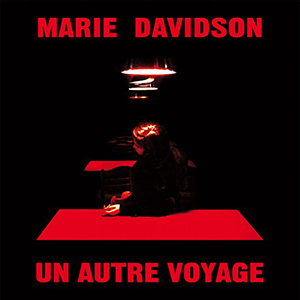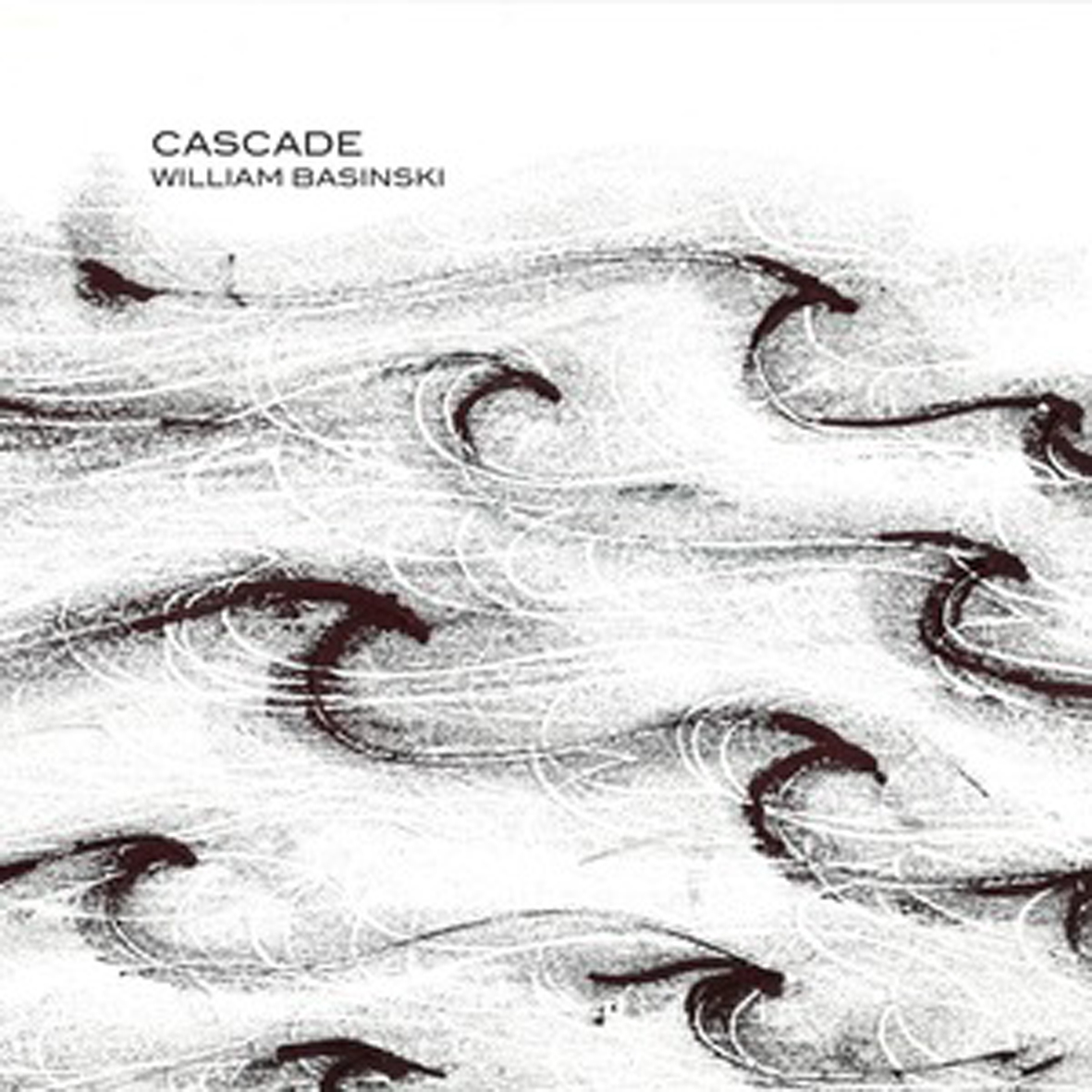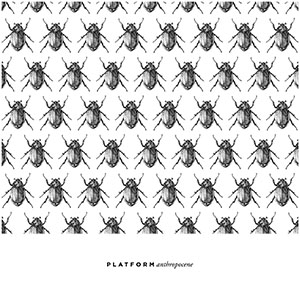 Since beginning her solo career in 2012, Un Autre Voyage (Another Journey) is Marie Davidson's third album, and even at this relatively young stage in her career shows marked development. Presented as a largely spoken word work (in French) of her personal experiences, there is a greater variety of emotions than the more depressive sounds of her earlier works, which comes through even absent the lyrics.
Since beginning her solo career in 2012, Un Autre Voyage (Another Journey) is Marie Davidson's third album, and even at this relatively young stage in her career shows marked development. Presented as a largely spoken word work (in French) of her personal experiences, there is a greater variety of emotions than the more depressive sounds of her earlier works, which comes through even absent the lyrics.
Two new shows just for you. We have squeezed out two extended release episodes for this weekend to get you through this week. They contain mostly new songs but there's also new issues from the vaults. The first show features music from Rider/Horse, Mint Field, Robert Aiki Aubrey Lowe, Anastasia Coope, ISAN, Stone Music, La Securite, Bark Psychosis, Jon Rose, Master Wilburn Burchette, Umberto, Wand, Tim Koh, Sun An, and Memory Drawings. The second episode has music by Laibach, Melt-Banana, Chuck Johnson, X, K. Yoshimatsu, Dorothy Carter, Pavel Milyakov, Violence Gratuite, Mark Templeton, Dummy, Endon, body / negative, Midwife, Alberto Boccardi, Divine. Cow in Maui from Veronika in Vienna. Get involved: subscribe, review, rate, share with your friends, send images! |



 Down to the final three releases in Die Stadt and Auf Abwegen’s expansive reissue program, E is a collaborative album originally issued on the Dom label in 1988. Having moved past his synth heavy industrial din but before fully embracing avant garde experimental sounds, it is a transitional record that hints at late 1980s digital synth pop, as well as pure dissonance. At times it may seem a bit too dated by the technology used, but as a whole the album is another strong entry in Tietchens' catalog.
Down to the final three releases in Die Stadt and Auf Abwegen’s expansive reissue program, E is a collaborative album originally issued on the Dom label in 1988. Having moved past his synth heavy industrial din but before fully embracing avant garde experimental sounds, it is a transitional record that hints at late 1980s digital synth pop, as well as pure dissonance. At times it may seem a bit too dated by the technology used, but as a whole the album is another strong entry in Tietchens' catalog. If this album was a true collaboration and had come out a decade ago, I probably would have pre-ordered it months in advance and excitedly camped out in front of my mailbox waiting for it to arrive.  Sadly, it is not (it is a split) and it did not, though Stator is still an admirably solid album.  Also, any fresh dispatch from Helge Sten's Deathprod project is always welcome.  That said, Geir Jenssen is the one who unexpectedly steals the show on this album, offering up some atypically dark and heavy fare to meet Sten's bleakness halfway.  Deathprod, of course, remains as characteristically blackened as ever.
If this album was a true collaboration and had come out a decade ago, I probably would have pre-ordered it months in advance and excitedly camped out in front of my mailbox waiting for it to arrive.  Sadly, it is not (it is a split) and it did not, though Stator is still an admirably solid album.  Also, any fresh dispatch from Helge Sten's Deathprod project is always welcome.  That said, Geir Jenssen is the one who unexpectedly steals the show on this album, offering up some atypically dark and heavy fare to meet Sten's bleakness halfway.  Deathprod, of course, remains as characteristically blackened as ever. I am a fairly passionate Charlemagne Palestine fan, but it must be noted that my love is a very complicated and highly conditional one. I tend to enjoy his music in spite of his eccentricities rather than because of them (they can be quite grating at times).  Consequently, I went into this album with no small amount of trepidation, as there were three red flags right off the bat: 1.) a ridiculous title, 2.) something resembling the word "sing," and 3.) a record label that I was completely unfamiliar with in Idiosyncratics.  Also, the nasal a cappella opening seemed to instantly confirm those misgivings.  Consequently, I was absolutely knocked sideways when Ssingggg then unexpectedly blossomed into an apocalyptic monster of a crescendo.  At the risk of sounding crazy, I believe this easily rivals all of Palestine's previous career highlights.  Also, as far as I am concerned, this is a strong (albeit dangerously early) Album of the Year contender.  I am confident that history will vindicate me.
I am a fairly passionate Charlemagne Palestine fan, but it must be noted that my love is a very complicated and highly conditional one. I tend to enjoy his music in spite of his eccentricities rather than because of them (they can be quite grating at times).  Consequently, I went into this album with no small amount of trepidation, as there were three red flags right off the bat: 1.) a ridiculous title, 2.) something resembling the word "sing," and 3.) a record label that I was completely unfamiliar with in Idiosyncratics.  Also, the nasal a cappella opening seemed to instantly confirm those misgivings.  Consequently, I was absolutely knocked sideways when Ssingggg then unexpectedly blossomed into an apocalyptic monster of a crescendo.  At the risk of sounding crazy, I believe this easily rivals all of Palestine's previous career highlights.  Also, as far as I am concerned, this is a strong (albeit dangerously early) Album of the Year contender.  I am confident that history will vindicate me. This is simultaneously a highly unusual and an extremely representative addition to William Basinski’s impressive discography: on one hand, it is yet another composition characteristically built upon a single brief and decaying tape loop, but it is also a comparatively unadulterated and "raw" prelude to the forthcoming Deluge album.  Both albums are built from the same tape snippet, but Deluge feeds its simple piano motif through a series of varying feedback loops.  On Cascade, that motif is simply allowed to endlessly repeat into rippling, hypnotic perfection without intervention.
This is simultaneously a highly unusual and an extremely representative addition to William Basinski’s impressive discography: on one hand, it is yet another composition characteristically built upon a single brief and decaying tape loop, but it is also a comparatively unadulterated and "raw" prelude to the forthcoming Deluge album.  Both albums are built from the same tape snippet, but Deluge feeds its simple piano motif through a series of varying feedback loops.  On Cascade, that motif is simply allowed to endlessly repeat into rippling, hypnotic perfection without intervention. The three Norwegian (and one French) artists who make up Platform may play mostly jazz-oriented instruments but the sounds they create are anything but. Clarinet, cello, piano and drums meld together into a wonderfully jerky, unpredictable free improvised noise. As mostly a live act, this album may not fully do the sound of them collaborating justice, but it makes for an exceptionally good attempt.
The three Norwegian (and one French) artists who make up Platform may play mostly jazz-oriented instruments but the sounds they create are anything but. Clarinet, cello, piano and drums meld together into a wonderfully jerky, unpredictable free improvised noise. As mostly a live act, this album may not fully do the sound of them collaborating justice, but it makes for an exceptionally good attempt. Triac formed in 2011 although did not release their first recorded material, In a Room until just last year. The Italian trio featuring former Tu M' member Rossano Polidoro (laptop) Marco Seracini (piano and synthesizers) and Augusto Tatone (bass) create glacial, yet gripping minimalist music in the spirit of Polidoro’s previous project. Both that and their follow-up record Days have a similar, consistent sound, although growth and development can already be heard from one album into the next.
Triac formed in 2011 although did not release their first recorded material, In a Room until just last year. The Italian trio featuring former Tu M' member Rossano Polidoro (laptop) Marco Seracini (piano and synthesizers) and Augusto Tatone (bass) create glacial, yet gripping minimalist music in the spirit of Polidoro’s previous project. Both that and their follow-up record Days have a similar, consistent sound, although growth and development can already be heard from one album into the next. No one could have predicted another Valet record, not even Honey Owens. A rash of techno EPs with The Miracles Club over the last couple of years and a long silence on the hallucinatory front seemed to signal that she was finished with her freaked-out days as a guitar wrangler and soundscape shaper. Drum machines and synth pianos were her new instruments and the dancefloor was her new home, the most natural venue for her conversion to four-on-the-floor rhythms and house melodies. Then, with almost an electric shock, news of a new Valet album on Kranky. Not all is as it was before, however. After seven years and the birth of a child a lot has changed in Valet’s world, and the music has changed with it in a way that is almost as surprising as the album happening at all.
No one could have predicted another Valet record, not even Honey Owens. A rash of techno EPs with The Miracles Club over the last couple of years and a long silence on the hallucinatory front seemed to signal that she was finished with her freaked-out days as a guitar wrangler and soundscape shaper. Drum machines and synth pianos were her new instruments and the dancefloor was her new home, the most natural venue for her conversion to four-on-the-floor rhythms and house melodies. Then, with almost an electric shock, news of a new Valet album on Kranky. Not all is as it was before, however. After seven years and the birth of a child a lot has changed in Valet’s world, and the music has changed with it in a way that is almost as surprising as the album happening at all. Digitally generated sound has been a staple of Scott Morgan's career as Loscil since his first release. With the project named for one of the basic operators in the popular Max/MSP software package, it is unsurprising that much of Sea Island is the result of DSP programming. However, the sound Morgan creates has a far richer, more organic quality than many who work with similar strategies and methods, and this album is one that is gripping in its natural sounding warmth.
Digitally generated sound has been a staple of Scott Morgan's career as Loscil since his first release. With the project named for one of the basic operators in the popular Max/MSP software package, it is unsurprising that much of Sea Island is the result of DSP programming. However, the sound Morgan creates has a far richer, more organic quality than many who work with similar strategies and methods, and this album is one that is gripping in its natural sounding warmth. Boston’s Sewer Goddess inhabit the blurry, aggressively dark space between doom metal plod and power electronics/industrial, blending those two extreme genres in a way that works flawlessly. Those two genres are not known for anything subtle, and Painlust is anything but, resulting in an album that embraces the best elements of both of those genres while managing to avoid the cliché pitfalls that are a significant problem within both.
Boston’s Sewer Goddess inhabit the blurry, aggressively dark space between doom metal plod and power electronics/industrial, blending those two extreme genres in a way that works flawlessly. Those two genres are not known for anything subtle, and Painlust is anything but, resulting in an album that embraces the best elements of both of those genres while managing to avoid the cliché pitfalls that are a significant problem within both.
